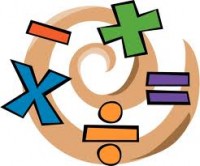Exponents are the shorthand notation for the repeated multiplication of a single number by itself. For example, if we want to multiply the number 5 by itself 3 times, that is we want to perform the operation 5x5x5, the notation which we would use is 5^3.
Consider the example: 5x5x5 = 5^3
In this example, the exponent is 3. The value of the exponent represents how many times the value is being multiplied. So, an exponent of 3 in the expression 5^3 tells us that we want to multiply the value of 5, 3 times. The value which is being multiplied, which in this case is 5, is called the base.
The process of using exponents is called “raising to the power”, where the exponent is the “power”.
The expression “5^3” is read as “five, raised to the third power” or “five, raised to the power of three”. There are two specially-named powers, “to the second power” is generally pronounced as “squared” and “to the third power” is generally pronounced as “cubed”. So “5^3” would commonly be pronounced as “five cubed”.
When we deal with numbers, we typically simplify the expression because it is generally easier to deal with “27” than to deal with “3^3”.
However, when we are dealing with variables, we need the exponents because it is easier to deal with the expression “x^6” than “xxxxxx”.
Here are some more examples:
4x4x4x4 = 4^4
3x3x3 = 3^3
2x2x2x2x2 = 2^5
3x3x3x3 = 3^4
5×5 = 5^2
Looking to get ready for the ACT? We can help with ACT Prep
This was written for you by Mia, one of the tutors with Test Prep Academy.


